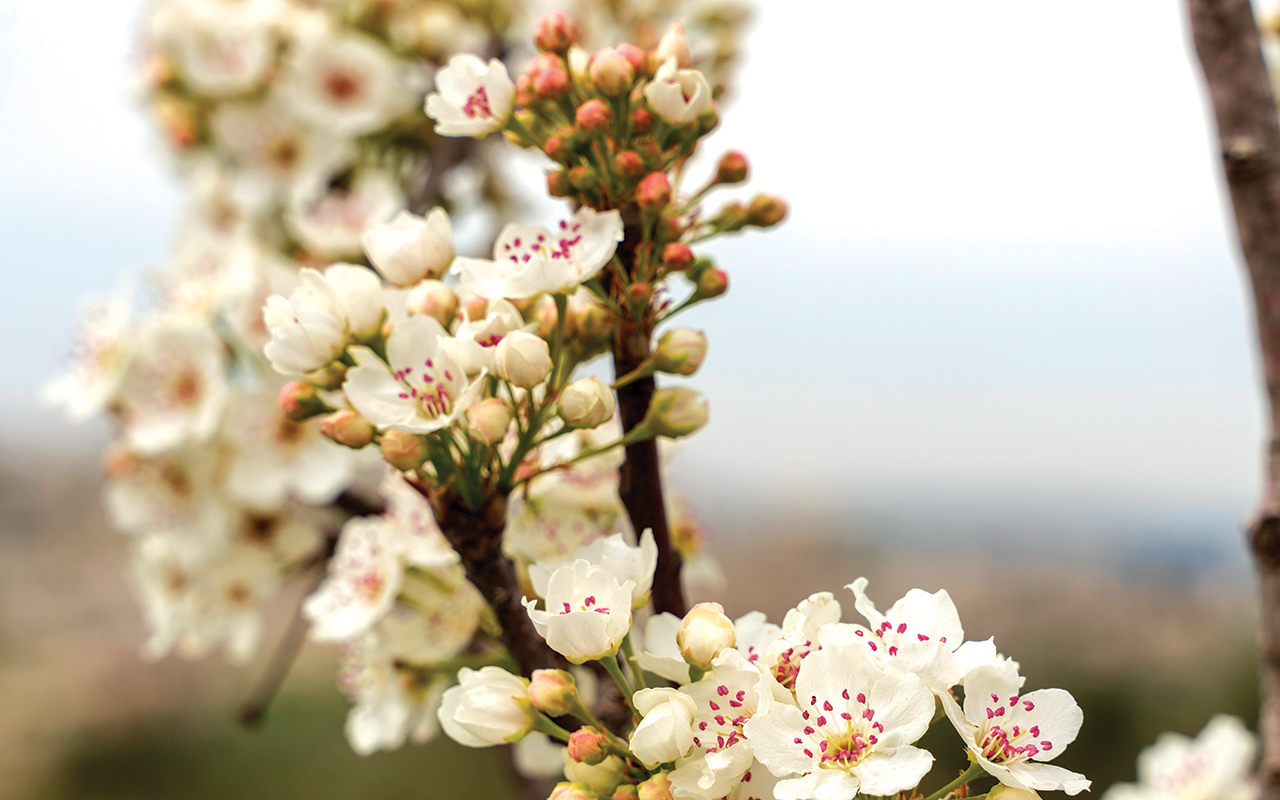
Pear
Pyrus syriaca
Rosaceae
The pear is a fruit-bearing tree believed to have originated either in China or Anatolia. Presently, it is primarily cultivated in China, Europe and the United States. The pear has been widely cultivated since ancient times, with evidence suggesting that it was being grown a thousand years before the birth of Christ. The Romans cultivated it extensively, and some cultures used its fruit as medication. Pear floral buds form either apically on long branches or horizontally on short branches. The latter take two years or longer before bearing a full crop of fruit. This fact must be taken into account when pruning pear trees. Pear varieties vary in their pollination needs. Some are self-pollinating (like the bartlett), while others require cross-pollination. Some produce fruit without the need for full fertilization (seedless). Therefore, it is generally recommended that at least two different compatible varieties be cultivated to ensure a heavy crop.
In the past, the pear was viewed as a blessed fruit due to its high nutritional value. Its fruit is considered to be a good source of fibre, vitamins C and K, and a group of natural substances known as flavonoids that occur in large quantities in the skins of fruit. Scientific research has proven that flavonoids are highly effective in protecting against serious diseases, primarily heart disease and type II diabetes. To appreciate how fibre-rich pears are, note that one fruit is enough to cover almost a quarter of a person’s daily needs, thus helping in the prevention of constipation. On the other hand, the fruit also contains a form of soluble fibre (pectin) which has great prebiotic properties to improve health.
There are cultivated and wild pears in Palestine. Wild pear (scientifically known as Pyrus syriaca) is popularly called injas barri (wild pear). It is drought-resistant, deciduous, and has hard thorny spines on its branches. It mainly grows in the mountainous regions of Palestine, such as Hebron, Jerusalem, Nablus and the Galilee. The blossoms on wild pear grow in March and April, and the white flowers, usually with scarlet stamens, are at their most beautiful in spring. The fruit ripens in August and September but is not edible until fully mature because of its hardness. In the past, prior to the availability of the different varieties of pears, farmers ate wild pear. The wild pear was also used as a rootstock to impart resistance to drought and trunk worm. Presently, normal pear is grafted onto a variety of rootstock such as seeded pear, which is resistant to lime, or it is grafted onto quince to dwarf the trees. Commercially, pears are grown on a limited scale in Palestine. They are mostly found in home gardens, while most pears consumed in the region are imported. There is no mention of the pear in Palestinian folklore.
Source: A Garden Among the Hills: The Floral Heritage of Palestine. © The Palestinian Museum 2019